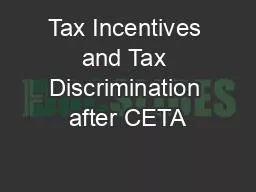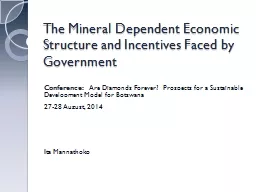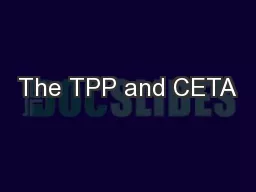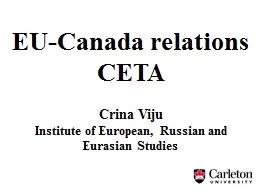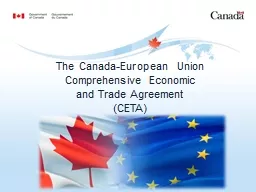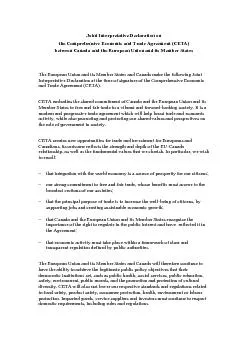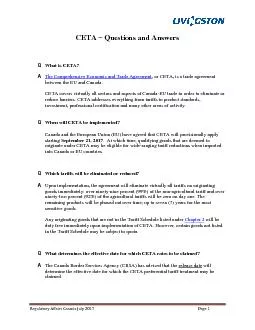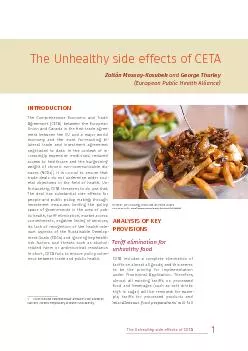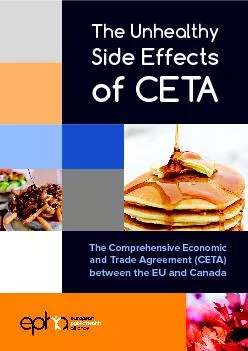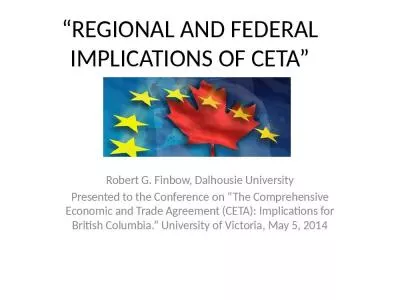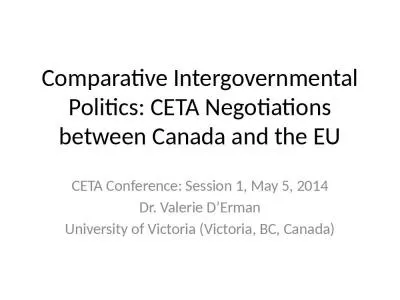PPT-Tax Incentives and Tax Discrimination after CETA
Author : backbays | Published Date : 2020-10-22
The CETA Implications for British Columbia Session 3 Legal Perspectives 6 May 2014 Geoffrey Loomer Schulich School of Law Dalhousie University geoffreyloomerdalca
Presentation Embed Code
Download Presentation
Download Presentation The PPT/PDF document "Tax Incentives and Tax Discrimination af..." is the property of its rightful owner. Permission is granted to download and print the materials on this website for personal, non-commercial use only, and to display it on your personal computer provided you do not modify the materials and that you retain all copyright notices contained in the materials. By downloading content from our website, you accept the terms of this agreement.
Tax Incentives and Tax Discrimination after CETA: Transcript
Download Rules Of Document
"Tax Incentives and Tax Discrimination after CETA"The content belongs to its owner. You may download and print it for personal use, without modification, and keep all copyright notices. By downloading, you agree to these terms.
Related Documents

